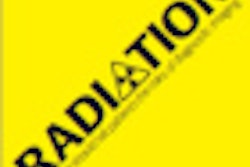In challenging cases of suspected chronic rhinosinusitis in children, CT scans represent the gold standard used to make a definitive diagnosis. But a conventional x-ray should be the first exam ordered because it works for the majority of cases, according to an article in the European Annals of Allergy and Clinical Immunology.
Chronic rhinosinusitis, a condition causing nasal blockage, nasal discharge, facial pain, headaches, and/or a reduced or absent sense of smell, is defined as lasting more than 12 weeks in duration. Medical treatment of this condition differs from persistent rhinitis, but the two can be challenging to differentiate.
When diagnostic imaging is needed to supplement fiber-optic nasopharyngeal endoscopy, CT or MRI is usually performed. The images produced by either type of scan are superior to an x-ray image. CT of the paranasal sinuses provides superior resolution of bone and soft tissue and removes superimposed, overlapping structures present in a conventional x-ray. Virtual endoscopic images can also be produced using 3D software.
The advantage of an MRI exam, in addition to eliminating radiation dose exposure to children, is that it provides a very detailed assessment of soft tissues, which helps define the characteristics and extent of inflammation. Unlike CT, it has the capacity to differentiate sinus opacification.
So why order a plain radiograph first? It's an inexpensive exam, x-ray equipment is readily available, and the x-ray image produced is good enough to make a diagnosis for the majority of cases, according to Dr. Gualtiero Leo, a pediatric allergist at the allergy and respiratory pathophysiology unit of Buzzi Children's Hospital, and colleagues (Eur Ann Allergy Clin Immunol, December 2010, Vol. 42:6, pp. 199-204).
The authors acknowledged that this recommendation to perform a sinus x-ray runs contrary to the advice of other experts. The 2007 European Position Paper on Rhinosinusitis and Nasal Polyps states that CT is the imaging modality of choice because x-rays produce false-positive and negative results, they noted.
However, Leo and colleagues referenced three recent studies that compared the accuracy of diagnoses made by conventional Waters' projection x-rays and CT scans. The plain radiography exams had a sensitivity range of 68% to 84.2% and a specificity range of 69.2% to 87%.
In view of this data, the majority of children can be successfully diagnosed with a Waters' projection x-ray, according to the group. CT and MRI exams could be limited to the remaining 15% to 25% of cases where images requiring more detail are needed.
In 2010, the cost of a single x-ray was approximately 30 euros in Italy, compared with 107 euros for a CT scan and 153 euros for MRI. With economies in countries throughout the world struggling to minimize healthcare expenses, taking an x-ray first makes economic sense, the authors concluded.



















